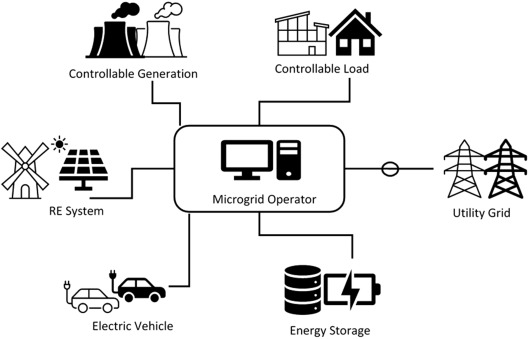PIT Tagging Insights: Analyzing Fish Behavior & Habitat
Explore how PIT tagging data is analyzed to reveal fish behavior and habitat use. Dive into techniques, real-world applications, and how Voda IQ advances PIT tagging research.

Introduction
Passive Integrated Transponder (PIT) tagging is revolutionizing how researchers, conservationists, and fisheries understand aquatic life. By using small, implanted PIT tags, scientists can track fish movement and behavior, revealing valuable insights into their life cycles, migration patterns, and habitat use. This article delves into the specifics of how PIT tagging data is analyzed, explaining the methods and technologies that transform raw tracking data into actionable insights. We’ll explore real-world applications, tools used, and commercial applications—highlighting Voda IQ’s contribution to advancing the field.
What is PIT Tagging, and Why Is It Important?
PIT tagging involves implanting small, electronic tags into fish, which can be detected when fish pass by monitoring stations equipped with PIT tag readers. Each PIT tag has a unique identifier, allowing researchers to distinguish between individual fish within a population. This technology provides a wealth of data without significantly impacting the fish, making it a preferred choice for longitudinal studies on fish behavior and habitat use.
PIT tag data has been used to understand migration patterns, breeding behaviors, and the effectiveness of conservation efforts. By revealing these behaviors, PIT tag helps inform sustainable fisheries management, ecosystem health assessments, and habitat conservation initiatives.
How PIT Tagging Data Is Collected
- Tagging Process:
Fish are briefly anesthetized, and a small PIT tag is inserted, typically under the skin or into the abdominal cavity. Once tagged, the fish are released back into their environment. - Data Collection:
Monitoring stations are installed at strategic points in the waterway, such as migration routes, spawning areas, and feeding grounds. These stations detect and record the unique identifiers of tagged fish as they pass by, logging details like time, location, and environmental conditions. - Data Transmission:
Collected data is either stored locally or transmitted to cloud-based servers where researchers can access and analyze it.
Analyzing PIT Tagging Data
The process of analyzing PIT tag data involves transforming large sets of raw data into structured, interpretable insights. Here are the primary methods and tools used:
1. Data Filtering and Cleaning
Data cleaning is essential to ensure accuracy. PIT data often includes duplicate records or missing data, which can skew results if not properly addressed. Tools like R and Python’s pandas library are commonly used to filter and preprocess data, removing duplicates and handling missing values to ensure that the dataset accurately reflects fish behavior.
2. Movement Analysis and Tracking
Analyzing movement patterns is central to PIT tag data analysis. Researchers use algorithms to map out migration routes, assess travel speed, and identify resting and breeding areas. Movement patterns reveal not only where fish spend their time but also how they interact with their environment.
For example, a study in the Columbia River Basin used PIT tag data to analyze the migration patterns of juvenile salmon. Researchers found that fish used certain parts of the river more than others, helping guide habitat restoration projects to focus on these critical areas.
3. Behavioral Analysis
Behavioral analysis focuses on understanding fish habits, including feeding and spawning. Using statistical models, researchers can identify trends and deviations in behavior. For instance, if a tagged fish exhibits a change in its usual migration pattern, it could indicate environmental stressors or changes in habitat quality.
Statistical tools like ANOVA and machine learning algorithms are used to identify and analyze patterns. Behavioral data has been used to study fish response to temperature changes, water quality, and human-made structures, providing critical information for ecosystem management.
4. Habitat Utilization Analysis
One of the most valuable insights from PIT tag data is understanding how fish use different habitats. This involves analyzing which areas fish frequent and how environmental factors like temperature, vegetation, and water flow impact their choices.
Researchers might use a geospatial analysis tool like ArcGIS to map habitat usage. For example, if PIT data shows high concentrations of fish in specific areas during certain seasons, conservationists can prioritize these regions for habitat protection efforts.
5. Survival and Mortality Estimation
PIT tag also helps estimate fish survival rates, a critical factor for endangered species. By analyzing when and where fish stop appearing on PIT monitors, researchers can estimate mortality rates. This data informs conservation programs, helping identify periods or locations of high mortality risk and guiding interventions.
6. Data Visualization and Reporting
Transforming complex data into visual insights allows researchers to communicate findings more effectively. Tools like Tableau and Power BI are commonly used to create visualizations of migration paths, habitat usage, and behavior patterns. Voda IQ, for example, offers intuitive visualizations that allow users to interact with data and uncover patterns quickly.
Real-World Applications of PIT Tagging Data Analysis
PIT tagging data has become a valuable asset for various stakeholders:
- Fisheries Management: Fisheries use PIT data to determine safe catch limits, assess fish health, and identify breeding grounds, enabling more sustainable fishing practices.
- Environmental Conservation: Conservation organizations use the data to monitor endangered species, identify critical habitats, and mitigate environmental risks like pollution and habitat destruction.
- Commercial Fishing: Commercial fisheries benefit from understanding fish behavior patterns, allowing them to optimize fishing schedules and locations, ensuring a more efficient harvest while preserving fish populations.
- Policy Making: Policymakers can use insights from PIT data to support legislation for conservation, such as designating protected areas and establishing guidelines for sustainable fishing practices.
Tools and Technologies Enhancing PIT Tagging Data Analysis
The analysis of PIT tagging data has evolved with the development of specialized tools:
- Voda IQ: Voda IQ’s software is tailored for PIT tag, offering advanced analytics and intuitive dashboards that make it easy to identify trends and monitor individual fish. With Voda IQ, users can visualize data on fish movement and habitat utilization, making it a valuable tool for research teams and conservationists.
- Telemetry and Data Storage Systems: Advanced telemetry systems allow continuous monitoring and efficient data collection. Data is then stored on cloud platforms where it can be accessed and analyzed remotely.
- Machine Learning Algorithms: Machine learning enables predictive analysis, helping researchers anticipate changes in fish behavior and habitat use based on historical data.
FAQs
1. What is the difference between PIT tagging and other tagging methods?
PIT tags are passive and rely on nearby readers to detect them, unlike GPS tags that continuously transmit location data. PIT tagging is less invasive and ideal for studies within a controlled range.
2. How is PIT tag beneficial for endangered fish species?
PIT tag allows for non-intrusive tracking, which is crucial for monitoring endangered fish populations and understanding their behavior without causing harm.
3. Can PIT tags provide information on environmental conditions?
Indirectly, yes. While PIT tags themselves don’t monitor environmental conditions, monitoring stations can be equipped with sensors that record temperature, water quality, and other data at the time of fish detection.
4. How long do PIT tags last?
PIT tags are designed to last for the lifespan of the tagged fish, making them highly reliable for long-term studies.
Conclusion
PIT tagging has transformed the field of aquatic research, providing unprecedented insight into fish behavior, migration, and habitat use. From sustainable fisheries management to habitat conservation, the applications of PIT tag data are vast and impactful. By leveraging advanced analytics and tools like Voda IQ, researchers can make the most of PIT tag data, helping protect aquatic ecosystems and promote sustainable practices.
Understanding fish behavior and habitat use through PIT tagging is an ongoing journey. With continued advancements in telemetry and data analysis, the future holds even more promise for this innovative field, fostering both ecological balance and commercial success.
Also know about
How to Select Fish for Your Pond: A Beginner’s Guide
Efficient Tracking of Endangered Fish with PIT Tag Readers in 2024









